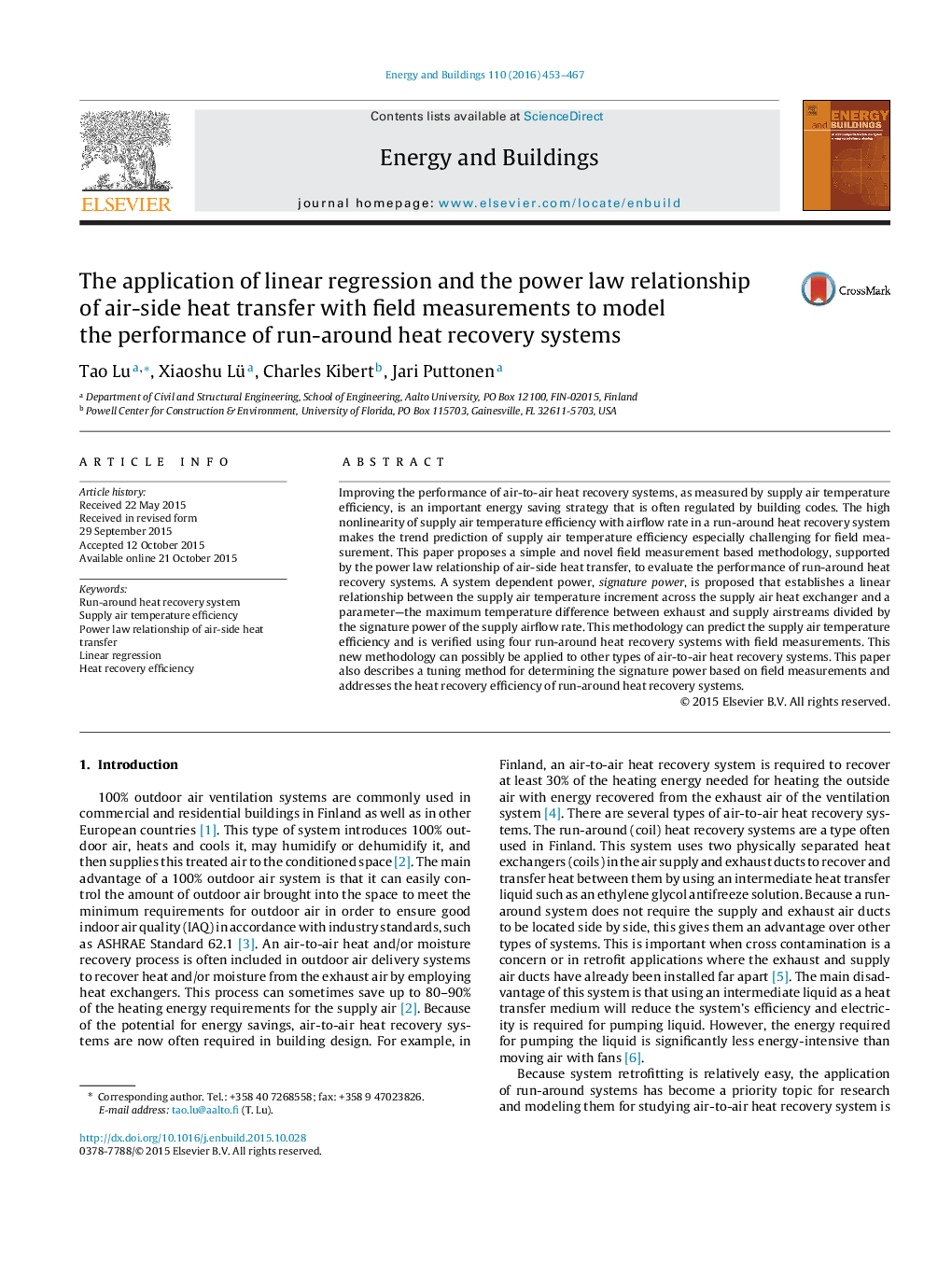| کد مقاله | کد نشریه | سال انتشار | مقاله انگلیسی | نسخه تمام متن |
|---|---|---|---|---|
| 262292 | 504023 | 2016 | 15 صفحه PDF | دانلود رایگان |
• A field measurement based methodology was developed for run-around systems.
• The methodology is based on the power law relationship of air-side heat transfer.
• Supply air temperature efficiency can be obtained indirectly by linear regression.
• The methodology was verified using four different systems with field measurement.
• The results are convincing and promising.
Improving the performance of air-to-air heat recovery systems, as measured by supply air temperature efficiency, is an important energy saving strategy that is often regulated by building codes. The high nonlinearity of supply air temperature efficiency with airflow rate in a run-around heat recovery system makes the trend prediction of supply air temperature efficiency especially challenging for field measurement. This paper proposes a simple and novel field measurement based methodology, supported by the power law relationship of air-side heat transfer, to evaluate the performance of run-around heat recovery systems. A system dependent power, signature power, is proposed that establishes a linear relationship between the supply air temperature increment across the supply air heat exchanger and a parameter—the maximum temperature difference between exhaust and supply airstreams divided by the signature power of the supply airflow rate. This methodology can predict the supply air temperature efficiency and is verified using four run-around heat recovery systems with field measurements. This new methodology can possibly be applied to other types of air-to-air heat recovery systems. This paper also describes a tuning method for determining the signature power based on field measurements and addresses the heat recovery efficiency of run-around heat recovery systems.
Journal: Energy and Buildings - Volume 110, 1 January 2016, Pages 453–467
